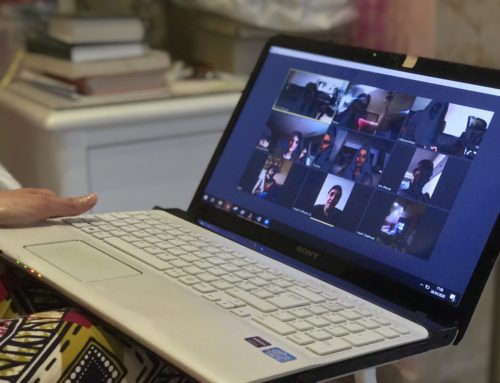It’s “Media Relations” week here at Nonprofit Communications.
Last Friday, I asked subscribers to my Nonprofit Marketing Tips e-newsletter (sign up here, middle of left-hand column) to send in their media-related questions so Claire Meyerhoff, media maven and my co-host of Magic Keys Radio, and I could answer one each day on the blog. Submit your own question and I’ll throw your name in the hat for a free webinar pass.

Photo by seangraham on Flickr Reporters don’t like it stale. |
Here’s today’s question:
“Our nonprofit has a unique opportunity to submit an article once a month to the local paper under the title ‘Spotlight on Mentoring.’ We showcase a mentor from our program each time, writing about the mentor as an individual and the role they play in Communities in Schools (CIS). I’m working on my second article, so obviously it’s still all new and fresh to me. However, I know that at some future point, it’s going to be tempting to simply ‘fill in the blanks’ each month and allow the article to become stale. I feel confident I can find interesting facts about the individual to share in each article, but how do I make sure my approach to their relationship with CIS and the not-so-subtle recruitment pitch that is included does not get repetitive and old?”
~ Christina Cooley Howell, Communities in Schools
And here’s Claire’s advice to Christina:
This is a fun chance to…have fun!
It should never be “fill in the blanks” because each mentor has their own unique story that you will discover when you interview them. This is the “wow, really?” moment. When you think, “wow, really?” — make sure you focus on that topic, then write about it.
Never bury the lead. If the person you’re interviewing says they just ran the Boston Marathon, put that in your lead. For example:
“When Teresa Lopez tells a six-grader that perseverance pays off, she means it. That’s because Lopez just finished the Boston Marathon, finishing in the top half of her age group. This week, Lopez has a new challenge — encouraging the fledgling soccer career of 12-year old Brian Conner, who is playing a team sport for the first time in his life and who says soccer practice feels like a marathon to him.”
The lead is THE most important part of your article, so put your best, most colorful stuff up front.
Your article is only as good as your questions, so try to come up with some unusual ones besides, “Why is this important to you?” Ask the mentor, “If YOU could have had any mentor when you were growing up, who would that have been?” or “Could you use a mentor now?”
Think about the last article you read in People Magazine or Parade … and WHY you found that article interesting. Then apply it to YOUR article.
You could write about a day in the life of a mentor, including what they talked about over lunch and what they ate. It’s the small details that make a story interesting and believable.
If you have a really good mentor who had a really dull experience, ask them for their best tips for a young person who wants to be the first in their family to go to college, and write about that. Call your article something like “Five Top Tips from a Seasoned Mentor” Or ask that person for their “Do’s and Don’ts” of mentoring.
After you’ve written about ten mentors, do a “greatest hits” column with each mentor sharing what they enjoyed the most about the experience. It doesn’t have to be ten, of course; it could be six or seven.
Make sure your article doesn’t sound like an advertisement for your program. When you’re finished, have someone read it out loud to you. If it sounds like a cheesy cable TV commercial, it needs some work.
Your quotes should be heartfelt and about a person or feeling.
“I loved working with Christina, because she was just brimming with enthusiasm. I graduated from high school twenty years ago, and it’s fun to see high school again through new eyes.”
is better than…
“Mentoring makes me feel good and it’s important to talk to teens.”
Put a little something-something at the end. The reader made it this far, and they deserve a treat. Your paper is local, so you want to connect with your readers (in an appropriate way of course!). If you have a line or two for a writer byline, do something fun with it . . .
“Tina DiAngelo is Director of the XYZ Mentoring Project. She lives in Scranton where she is involved with Community Theater and the SPCA. Her dream mentor would be Maya Angelou.”






